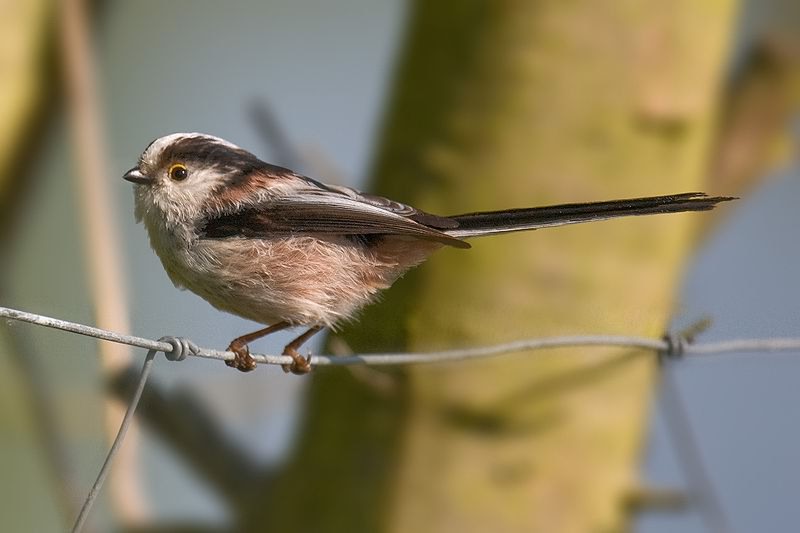
Picture ©2009 Andreas Trepte
Click photo for a larger image
Long–tailed Tit - Aegithalos caudatus (rosaceus)
Family - Aegithalidae
Also known as - Long–tailed Bushtit

Picture ©2009 Andreas Trepte
Click photo for a larger image
The Long–tailed Tit is a widespread common bird found throughout Europe, Asia and across the UK except for the far north and west of Scotland. They can be seen in deciduous and mixed woodland, farmland hedgerows, scrubland, parkland and gardens. They are a tiny rotund bird 13–15cm (5–6in) in total length, a stubby bill and a very long 7–9cm (2.75–3.5in) narrow tail. The sexes look the same with young birds undergoing a complete moult to adult plumage before the first winter. The plumage is mainly black and white, with variable amounts of grey and pink. They are easily recognisable with distinctive colouring, a tail that is bigger than its body, and an undulating flight. Gregarious and noisy residents, in winter they form excitable flocks of around 30 birds with other tit species. These flocks will occupy and defend territories against neighbouring flocks.
The bird's year–round diet of insects, moths and butterflies and social foraging makes their habitat choice in winter towards deciduous woodland, typically of Oak, Ash and Sycamore species. Scrub areas are preferred for nesting usually in thorny bushes less than 3m above the ground. The nest is constructed from lichen, feathers, spider egg cocoons and moss made into a flexible sac with a small round entrance on top, suspended either low in a gorse or bramble bush or high up in the forks of tree branches. Nests suffer a high rate of predation with only around a 20% success rate. The IUCN, Birdlife International and The British Trust for Ornithology (BTO) all list Aegithalos caudatus as a "species of least concern", currently under little or no threat and is reasonably abundant.
Site design ©1999– Brickfields Country Park - Privacy -